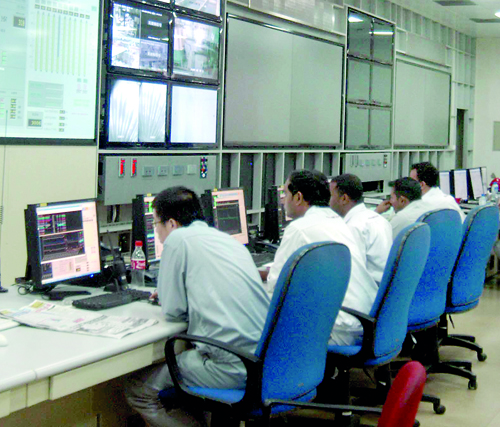Sunday Times 2
Norochcholai power station: A challenge to our engineers
Suggestions have been made by certain interested persons to hand over the operation and maintenance of the Norochcholai Power Station to the Chinese Contractors, namely China Machinery Engineering Corporation (CMEC). This company was partly responsible for numerous breakdowns due to the reported substandard quality of the equipment supplied following the unsolicited tender to the Government of Sri Lanka.
Apart from the fact that the CEB will have to bear heavy expense on this exercise, the knowledge benefit that will accrue to the CEB engineers will be minimal. Furthermore, the resultant tariff increases will bring about a frying-pan-to-the-fire situation, mostly for middle class domestic consumers of electricity.

Norochcholai Power Plant: CEB engineers are capable of tackling the problems
The Chinese contractors — if permitted to take control of the first phase of the plant — will definitely not provide the necessary knowhow to our engineers with whatever type of agreements that will be signed. We are aware of the difficulties encountered by our experts because the CMEC has not provided the necessary operation and maintenance instructions in English. This should have been a prerequisite when the plant had to undergo a lengthy testing procedure, prior to its commissioning. A moot question is: To what extent did the testing procedures conform to the testing manual. We are also aware that most of the problems faced during the reported 26 outages of this plant were due to the plant being commissioned prior to the completion of the relevant tests. We are not aware whether the warranty on the defects had been invoked. When a defect is identified during the warranty period, and after the defect is rectified by the contractor, the contractor is responsible to ensure that the defect will not recur before one year from that date. However, if the same defect occurs again the contractor has to go through the earlier process again. Defects once cleared have to be documented and signed by both the contractor and the CEB.
Eventually after the proposed two-year period of operation by the CMEC, the CEB engineers will be back to square one. They have to take over and operate the plant with the Chinese contractors hiding the problems they encountered with the advantage of the language barrier. In the circumstances, the decision of the hierarchy could be to permit the Chinese contractors to continue with the operation of the first phase of the plant, and also the second and third phases. It is not wrong to mention that handing over the control of the plant to CMEC at this juncture will be similar to action taken by the oil mafia in recent years.
I am making these comments with past experience of being the first station manager of the 80 MW Sapugaskanda Diesel Power Station. After the commissioning of the Plant in 1983, there were a number of teething problems but the defects that occurred were covered by the warranty. There were also serious problems that occurred to the plant as each of the generator-sets was run at 20 MW, although the designed peak load was 18 MW. Yet the French company tried its best to take over the operation and maintenance of the plant. There were two electrical and two mechanical engineers who received training in France for three months. On their return, they trained engineers and other technical personnel here with the assistance of the French technical personnel who were at the site during the warranty period of one year.
It comes as no surprise that although the Norochcholai Plant was to produce 300 MW, it could supply only 270 MW.
We are informed that nearly 50 persons of various technical grades were sent to China for training. If proper training was given there is no reason why they cannot operate the plant effectively. But we are aware of the various problems that occur due to the inherent defects. They became evident due to either materials of the plant not complying to the required standards or otherwise. In any case the CEB engineers who were at the site are now much knowledgeable on the operation and maintenance of the plant and the challenging task they have undertaken should be appreciated and acknowledged.
The Chinese personnel are at the site and the second plant is due to be commissioned soon. Let us hope that all the necessary tests are completed and that our engineers will be more confident in the operation of both these plants. It is hoped that the language barrier will be overcome during the operation of the second phase of the plant and that an accepted training procedure will be implemented properly.
(The writer is past president of the CEB Engineers’ Union and former vice chairman of the CEB)


